Understanding Roof Underlayment and Why It’s Important
Melissa Russell • August 19, 2025
Understanding Roof Underlayment and Why It’s Important
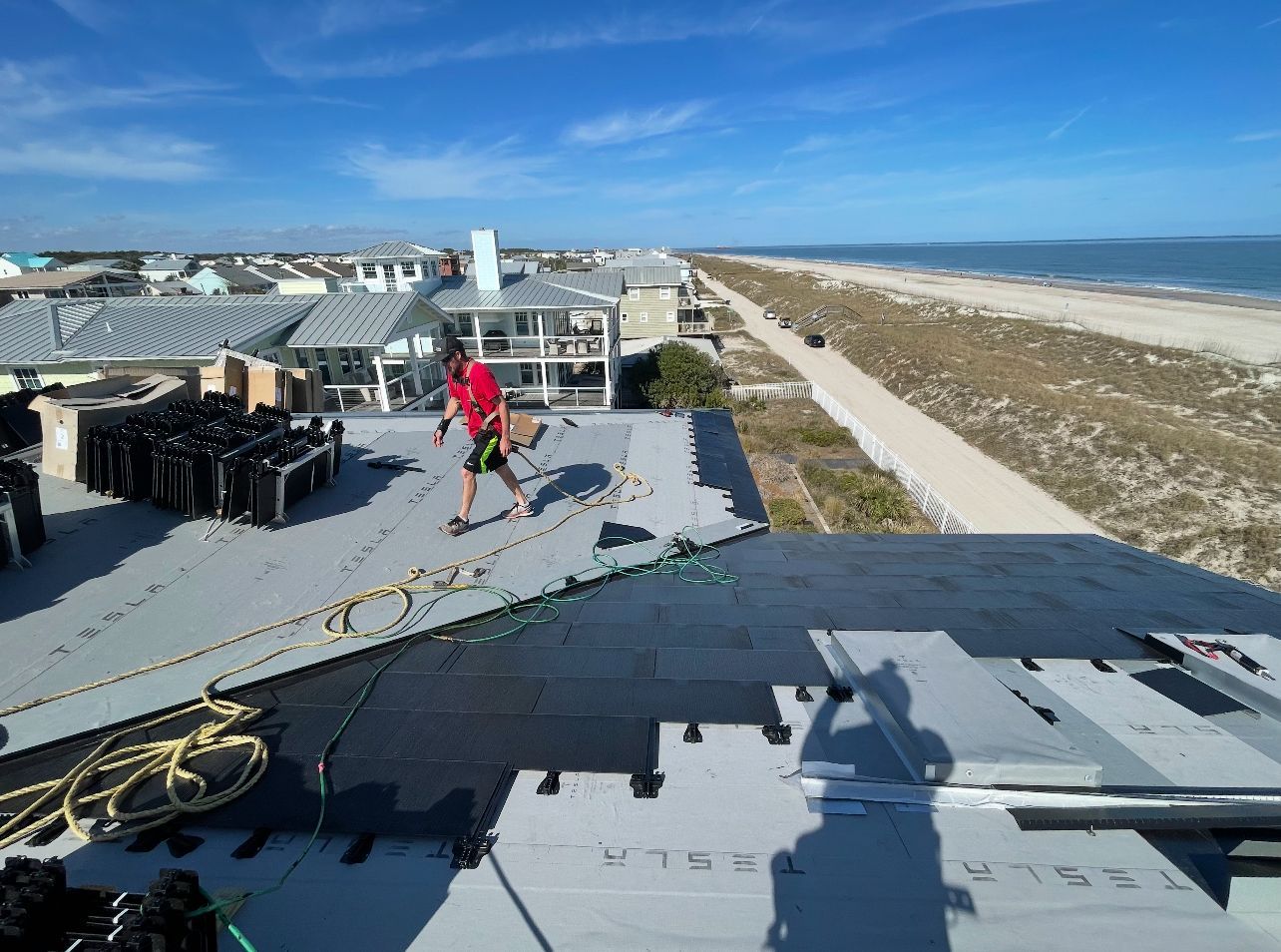
When most homeowners think about a roof, they picture shingles, tiles, or metal panels. But there’s a critical layer underneath all of that—one you can’t see—that plays a huge role in protecting your home: the roof underlayment.
So what is it, and why does it matter so much? Let’s break it down.
What Is Roof Underlayment?
Roof underlayment is a protective barrier that’s installed directly on the roof decking (the wood layer) before the final roofing material is applied. It’s your roof’s second line of defense—working behind the scenes to keep your home safe from moisture and other damage.
There are three common types:
- Felt (or tar paper): Traditional option made from paper or fiberglass with asphalt coating.
- Synthetic underlayment: Modern, durable, water-resistant material that resists tearing and is lightweight.
- Rubberized asphalt: High-end, waterproof option with adhesive backing; great for leak-prone areas.
Why Is Underlayment So Important?
Even the best shingles can’t do it all on their own. Here's why underlayment matters:
1. Water Protection
Shingles are your roof’s first defense—but they can be lifted or damaged by wind, and water can sneak in. Underlayment keeps moisture out if shingles fail or shift.
2. Storm Backup
During heavy rain, hurricanes, or wind-driven storms (hello, Florida!), underlayment acts as a backup barrier that helps prevent leaks even when shingles are compromised.
3. Prevents Mold and Wood Rot
By keeping water and moisture away from your roof decking, underlayment protects your roof’s structure from rot, warping, and mold—which can lead to expensive repairs.
4. Protects During Installation
If your roof installation is delayed due to weather, synthetic underlayment can temporarily shield your home from the elements until shingles are installed.
Our Recommendation
At Ron Russell Roofing Inc., we typically recommend synthetic underlayment
for most residential roofing projects. It holds up better to heat, humidity, and wind—making it ideal for homes in Northeast Florida.
We also pay special attention to valleys, edges, and around vents, where we often use upgraded waterproof options to further protect against leaks.
📞 Need a Roof Inspection or Replacement?
Whether you're building new or replacing an old roof, make sure your contractor uses quality underlayment. It's not something you see, but it's one of the most important parts of your roof system.
Have questions? Want to know what’s under your roof?
Call Ron Russell Roofing Inc.
at 904-714-1907
or request a free estimate today!
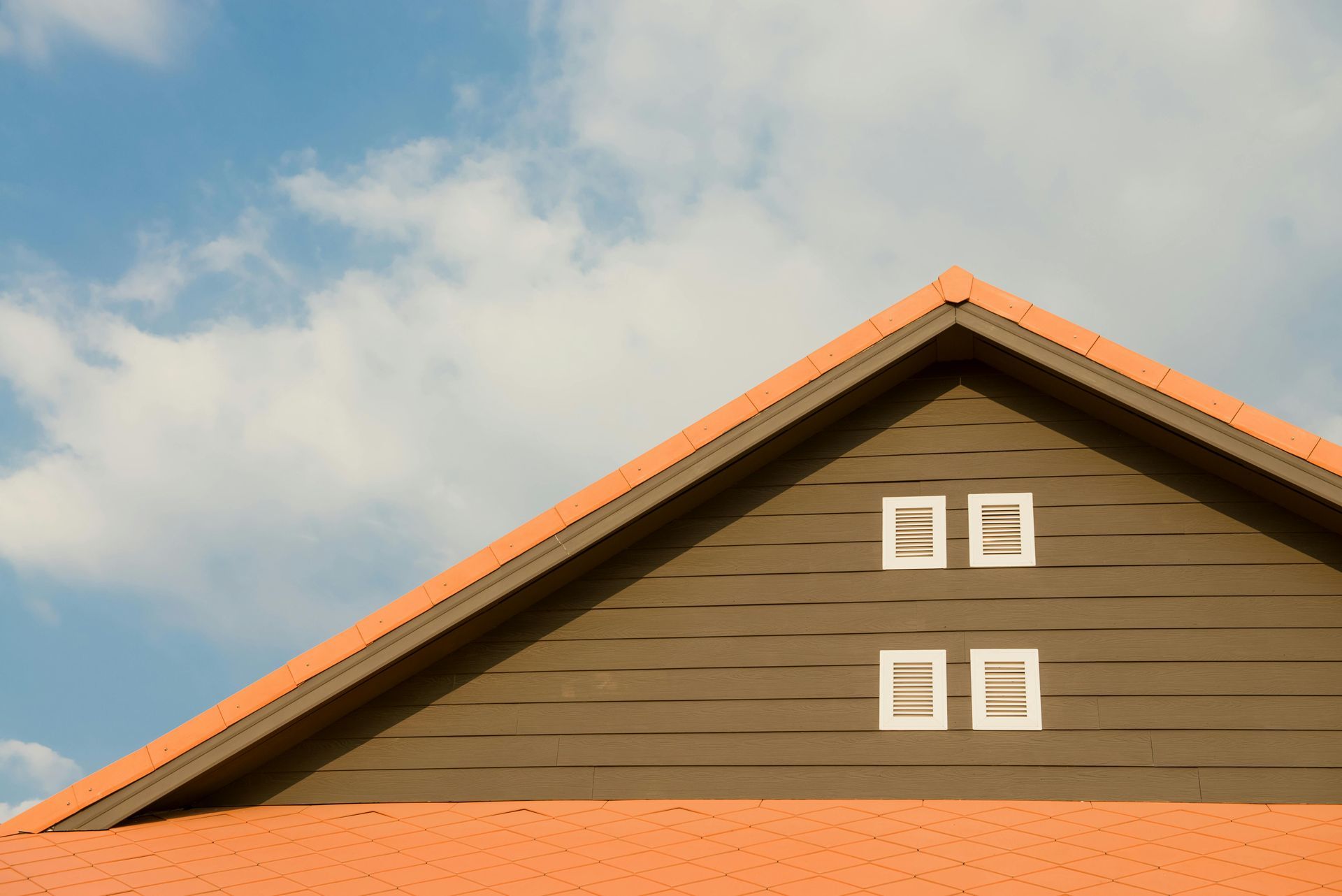
When you invest in a new roof, you’re not just paying for shingles and materials—you’re paying for trust. You want to know the workmanship is solid, the installation is correct, and the company standing behind the job is dependable. At Ron Russell Roofing Inc., we take that responsibility seriously. That’s why every roof we install is backed with confidence, honesty, and industry-leading craftsmanship. Here’s how we ensure every customer gets a roof they can trust for years to come. 1. We Use Proven, High-Quality Materials Your roof is only as strong as the products used to build it. Inferior materials may save money upfront, but they fail faster and create long-term problems. At Ron Russell Roofing, we install roofing systems from trusted, reputable manufacturers known for durability and performance in Florida’s climate. Whether it’s shingles, metal, underlayment, flashing, or ventilation components—your roof is built with products designed to last. Quality materials = a quality roof. 2. Our Installers Are Skilled, Experienced, and Detail-Oriented A great roofing system requires more than good materials—it takes skilled hands and technical expertise. Our team is trained to follow manufacturer guidelines, Florida building codes, and best practices for long-lasting installations. We don’t cut corners. We don’t rush through jobs. And we treat every home like it’s our own. That level of attention shows in the final result—and it shows in the roofs that stand strong year after year. 3. We Follow a Thorough Installation Process Every project, big or small, follows a clear and detailed process designed to ensure accuracy and consistency: Full pre-installation inspection Tear-off and assessment of decking Proper underlayment installation Precise flashing placement Correct shingle or metal panel installation Ventilation and finishing details checked Final cleanup and property protection This isn’t “just a roof”—it’s a complete system , and we make sure each piece works together the way it should. 4. We Stand Behind Our Workmanship A roof installed correctly should provide years of protection. That’s why we back our workmanship—not just the materials. If a problem arises because of the way something was installed, we make it right . It’s that simple. Our reputation in the community is built on trust , and we protect it by being the kind of roofing company that stands behind every nail, every line, and every detail. 5. Clear Communication from Start to Finish Homeowners deserve to know what’s happening on their roof—from the first inspection to the final walkthrough. We keep you informed throughout the process so you always understand: What we’re doing Why we’re doing it What you can expect next No guesswork. No surprises. Just honest communication and professional service. 6. A Commitment to Long-Term Customer Care A roof installation isn’t the end of our relationship—it’s just the beginning. Whether you need a future inspection, storm damage assessment, or answers to maintenance questions, we’re here long after the job is complete. Homeowners feel confident not just because of the roof we build, but because of the support we provide after it’s installed. Trust a Roofing Company That Stands Behind Every Job Confidence doesn’t come from talking—it comes from doing the job right. At Ron Russell Roofing Inc., we combine the best materials, expert installation, and honest customer care to give you a roof you can rely on. Whether you're replacing your roof or planning ahead, our team is ready to deliver the craftsmanship and peace of mind you deserve. 📞 Call today to schedule an inspection 🔨 Quality installation. Honest service. Confidence in every roof.

1. Ignoring Early Signs of Roof Damage Small issues like missing shingles, minor leaks, or granules in the gutter often get dismissed. The risk: Moisture intrusion, attic damage, and interior ceiling stains. How to avoid it: Don’t wait—schedule a professional inspection as soon as you notice something unusual. 2. Delaying Roof Replacement Many homeowners try to extend their roof’s life beyond its limits. The risk: Accelerated deterioration, leaks, mold, and expensive emergency repairs. How to avoid it: Know your roof’s age and condition. If it’s 15–20+ years old, get yearly inspections. 3. DIY Roof Repairs Roofing is not a DIY-friendly project. The risk: Injuries, voided warranties, and incorrect repairs that lead to bigger issues. How to avoid it: Always use a licensed roofing contractor—especially in Florida’s challenging weather conditions. 4. Choosing the Cheapest Contractor Low bids often mean low-quality work. The risk: Poor installation, inferior materials, and a roof that won’t last. How to avoid it: Choose a reputable company with strong reviews and proven craftsmanship—like Ron Russell Roofing. 5. Neglecting Gutter Maintenance Clogged gutters cause water to back up onto the roof. The risk: Rot, leaks, fascia damage, and mold growth. How to avoid it: Clean gutters twice a year or install gutter guards to reduce buildup. 6. Overlooking Roof Ventilation Ventilation is essential for roof health—especially in Florida’s heat. The risk: Trapped moisture, warped shingles, high energy bills, and a shorter roof lifespan. How to avoid it: Have a roofing professional evaluate your attic ventilation regularly. 7. Not Maintaining Flashing and Sealants Flashing often fails before the roof itself. The risk: Hidden leaks around chimneys, vents, skylights, and valleys. How to avoid it: Include flashing inspections as part of your routine roof maintenance. 8. Skipping Annual Roof Inspections This is the #1 roofing mistake. The risk: Unseen damage that grows into costly repairs. How to avoid it: Schedule yearly inspections—especially after hurricanes or heavy Florida storms. Protect Your Home with Ron Russell Roofing Inc. Avoiding these common mistakes will extend your roof’s lifespan and protect your home from costly damage. Whether you need an inspection, repair, or full replacement, Ron Russell Roofing Inc. delivers reliable, professional service every time. 📞 Call today to schedule your inspection

Your roof works year-round to protect your home, and a little seasonal maintenance goes a long way in keeping it strong, dependable, and leak-free. By checking your roof each spring and fall, you can catch small issues early and extend its overall lifespan — especially in a climate like Florida, where heat, humidity, and storms are the biggest factors. Spring Roof Checklist Spring is an ideal time to assess your roof after months of humidity, rain, and shifting temperatures. 1. Inspect Shingles for Damage Look for cracked, curling, loose, or missing shingles. Shingles can wear down more quickly in Florida due to year-round sun exposure and strong storms. 2. Check Gutters and Downspouts Leaves, pine needles, and debris can build up throughout the year. Clearing your gutters helps prevent water overflow that can damage fascia boards or cause pooling near your foundation. 3. Look for Signs of Water Stains Indoors Any discoloration on ceilings or walls may signal a roof leak. Spring showers often reveal moisture issues that weren’t noticeable before. 4. Examine Flashing Around Roof Penetrations Chimneys, vents, and skylights are common leak points. Make sure flashing hasn’t loosened or shifted after windy days or heavy rain. 5. Trim Branches Near the Roof Florida storms can send branches crashing onto roofs. Trim back anything hanging close to your home to reduce future risk. Fall Roof Checklist Fall is a great time to prep your roof before Florida’s dry season — and before the next round of spring and summer storms. 1. Clean Gutters Thoroughly Removing debris prevents water from backing up onto your roof and helps protect against mold, rot, and insect activity. 2. Check for Worn or Loose Shingles Florida’s summer heat can cause shingles to blister, warp, or weaken. Addressing damage in the fall helps protect your home before the next storm season. 3. Inspect Attic Ventilation Proper airflow keeps attic temperatures balanced and prevents moisture buildup, which is especially important in Florida’s humid climate. 4. Look for Moss or Algae Growth Florida’s warmth and humidity can encourage algae and moss. If left untreated, they can shorten the life of your roof by trapping moisture. 5. Schedule a Professional Roof Inspection A fall roof check gives you peace of mind heading into the dry season and ensures your roof is ready for next year’s storms. Why Seasonal Roof Care Matters Regular spring and fall checks help: Extend the life of your roof Prevent leaks and moisture damage Maintain energy efficiency Reduce costly emergency repairs Keep your home safe and structurally healthy A little attention twice a year can make a huge difference for Florida homeowners. Need Help With Seasonal Roof Care? At Ron Russell Roofing Inc. , we make seasonal maintenance simple. Whether you’re dealing with wear from the summer heat, storm concerns, or just want peace of mind, our team is here to keep your roof in top shape.
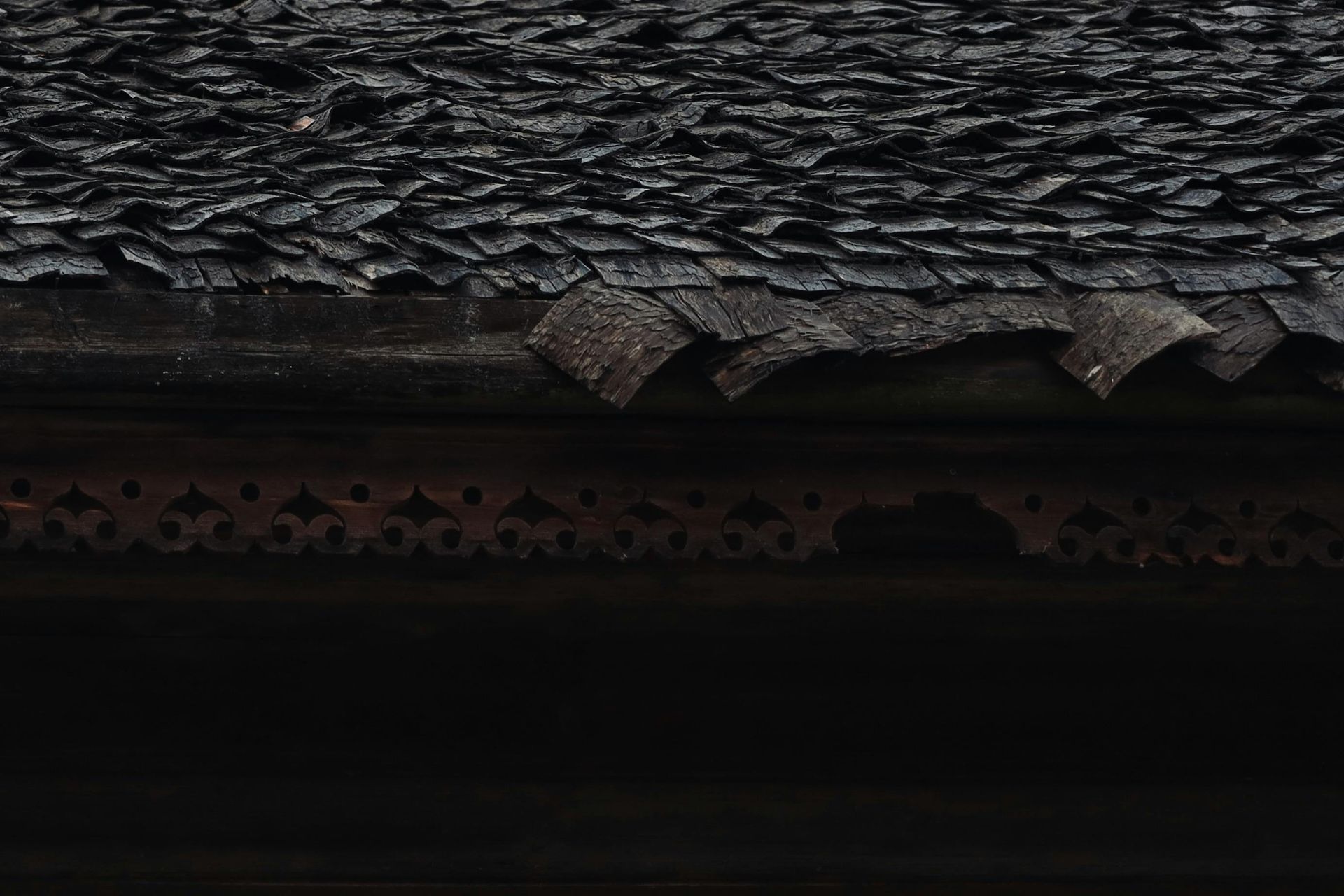
Your roof does more than protect you from rain and weather — it quietly reveals a lot about the condition of your entire home. When something is wrong with the roof, there’s almost always a deeper issue hiding underneath. Paying attention to the signals your roof gives can save you from costly repairs down the road and help maintain your home’s long-term health. 1. Shingle Wear Signals Aging or Structural Stress Curling, cracking, or missing shingles don’t happen randomly. They often point to bigger concerns such as: Aging materials nearing the end of their lifespan Poor attic ventilation, causing shingles to overheat Structural movement, which can shift or loosen shingles If multiple areas of your roof show this kind of wear, it’s your home’s way of saying it needs attention — not just at the surface, but possibly in the layers below. 2. Stains or Dark Streaks Indicate Moisture Problems Dark streaks, moss, or algae might seem cosmetic, but they often signal deeper issues: Trapped moisture, which can lead to mold Shingle deterioration, reducing protection Water retention, which may cause leaks Moisture problems are among the biggest threats to your home’s overall health because they spread quickly and quietly. 3. Sagging Areas Suggest Structural Damage A roof that appears uneven or sagging is a serious warning sign. It may point to: Water-damaged decking Compromised support beams Excessive weight from layers of old roofing This is a situation that should be inspected immediately, as structural issues can affect your safety and your home’s long-term stability. 4. Granules in Gutters Reveal Material Breakdown If you notice a buildup of granules in your gutters, your shingles are wearing down faster than they should. This can mean: UV damage Storm wear and tear Aging asphalt shingles Granule loss reduces your roof’s ability to protect against heat, storms, and moisture — all key elements of your home’s health. 5. Interior Signs Point to Hidden Roof Problems Your roof speaks through your home’s interior, too. If you’re seeing: Ceiling stains Peeling paint Musty odors in the attic …these are often the first clues of roofing issues that haven’t surfaced outside yet. 6. Consistent Energy Spikes Can Link Back to Roofing Issues Your roof regulates more than weather — it impacts your home’s efficiency. If your energy bills keep climbing, your roof may be telling you: Insulation is failing Ventilation is insufficient Air is escaping where it shouldn’t A healthy roof helps maintain stable indoor temperatures year-round. Final Thoughts A well-maintained roof is one of the strongest indicators of a healthy home. When you pay attention to the early signs — from shingle condition to indoor moisture — you protect the entire structure and avoid major repairs later. At Ron Russell Roofing Inc., we help homeowners understand what their roof is trying to tell them. Whether you need an inspection, repair, or replacement, our experienced team is here to keep your home strong from the top down.
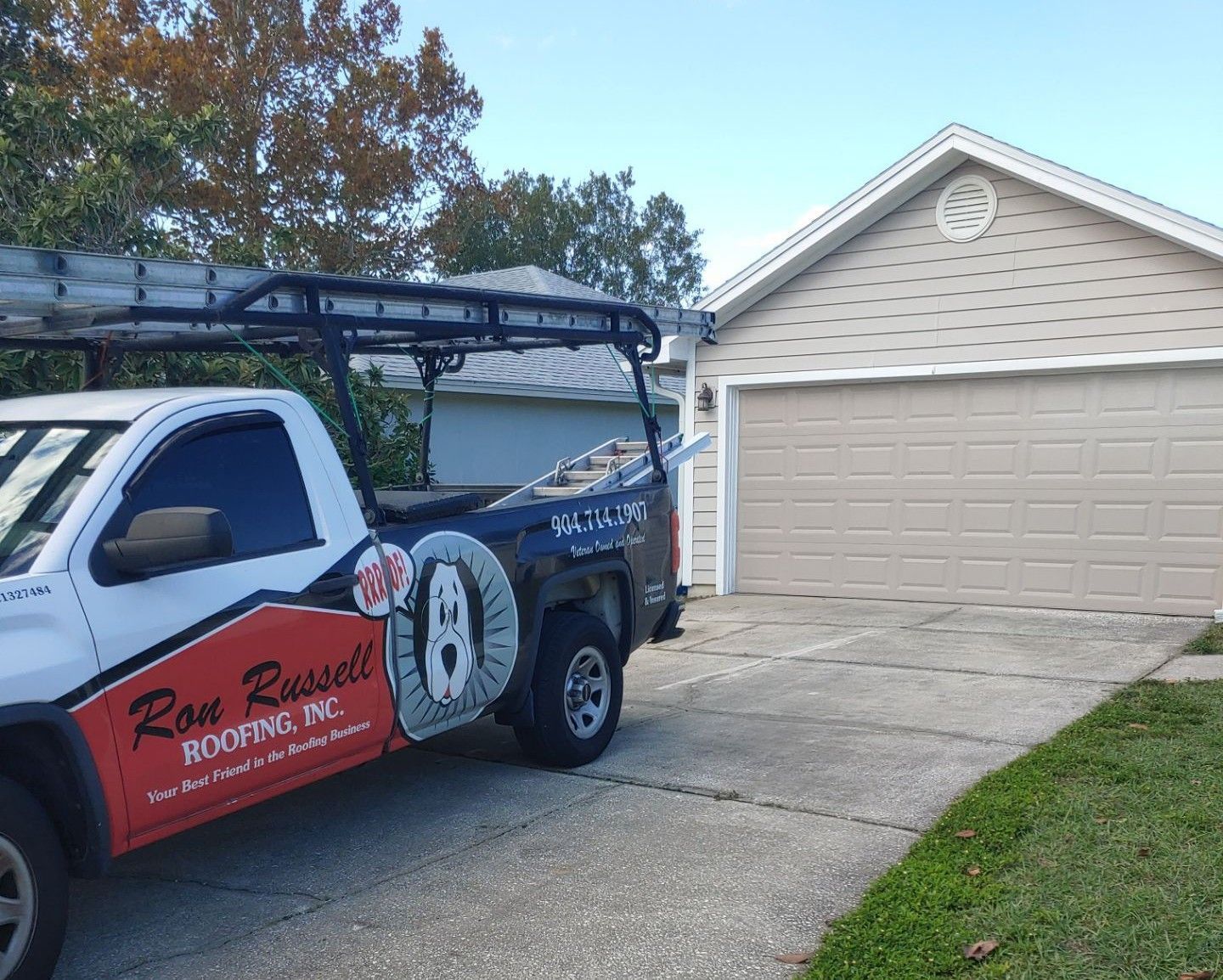
When it’s time for roof repair or replacement, choosing a local roofing company can make all the difference. Local roofers bring more than just skill — they bring firsthand knowledge of your area’s unique weather , building codes , and architectural styles . A local team understands the challenges your roof faces throughout the year, from summer heat and humidity to strong seasonal storms. They know which materials hold up best in your climate and can recommend options proven to last. Plus, local contractors are familiar with permitting requirements and HOA guidelines , saving you time and stress during the process. Working with a nearby company also means better accountability . You’re not dealing with out-of-town storm chasers or call centers — you’re working with professionals who live and work in your community and stand behind their craftsmanship. At Ron Russell Roofing Inc. , we take pride in being your trusted local roofing experts. We’ve built our reputation on honesty , quality , and long-term relationships — because our neighbors deserve nothing less.
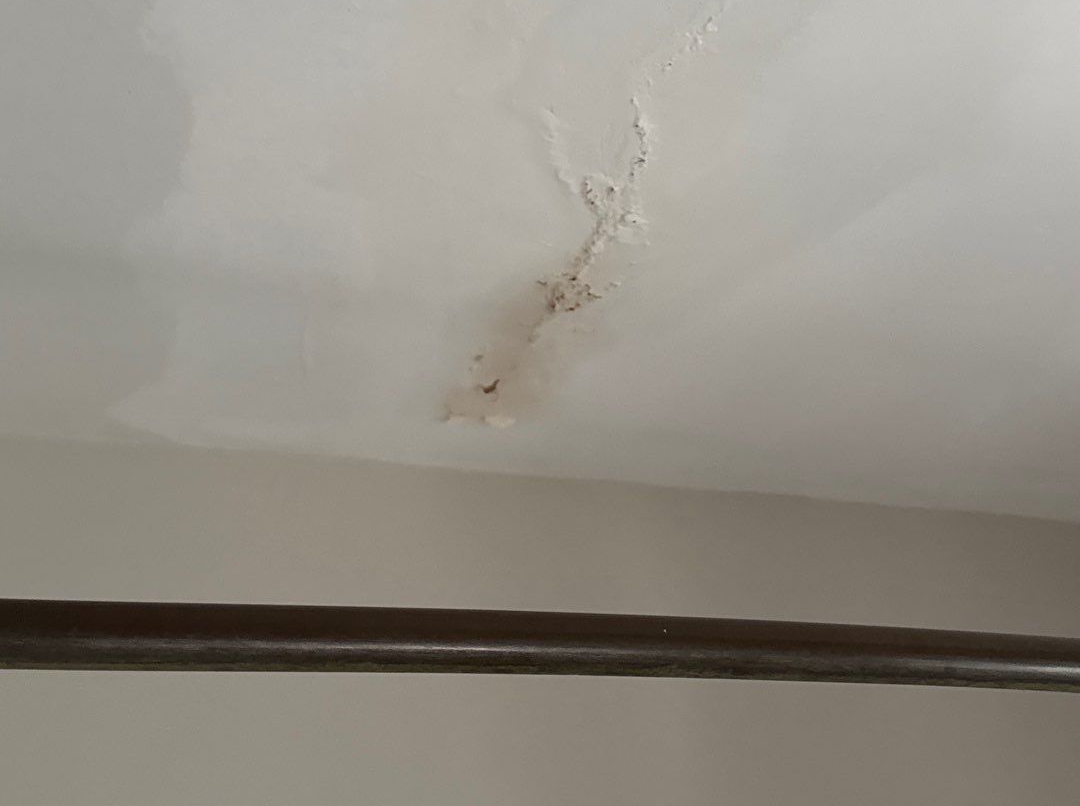
Roof leaks can lead to costly damage if they’re not caught early. Knowing what causes leaks can help you prevent problems before they start. Here are the most common reasons roofs leak — and how to stay ahead of them. 1. Aging Shingles Over time, shingles crack, curl, or lose protective granules, allowing water to seep in. Prevention: Have your roof inspected regularly and be aware of your roof’s age. 2. Storm Damage Strong winds and hail can loosen or remove shingles. Prevention: Check your roof after storms and replace damaged shingles quickly. 3. Worn or Loose Flashing Flashing around chimneys, skylights, and vents is a common leak point when it deteriorates. Prevention: Ensure flashing is checked during routine roof maintenance. 4. Clogged Gutters If gutters overflow, water can back up under the shingles. Prevention: Clean gutters at least twice a year to keep water flowing properly. 5. Failing Vent Pipe Seals Rubber vent boots crack and break down over time. Prevention: Inspect vent pipes and replace worn boots when needed. 6. Ice Dams (Cold Climates) Ice buildup along the roof edge can force water beneath shingles. Prevention: Proper attic ventilation and insulation can help prevent ice dams. Bottom Line Small issues can turn into roof leaks quickly. Regular inspections and maintenance are the best way to protect your home. If you suspect a problem, addressing it early can prevent costly repairs later.
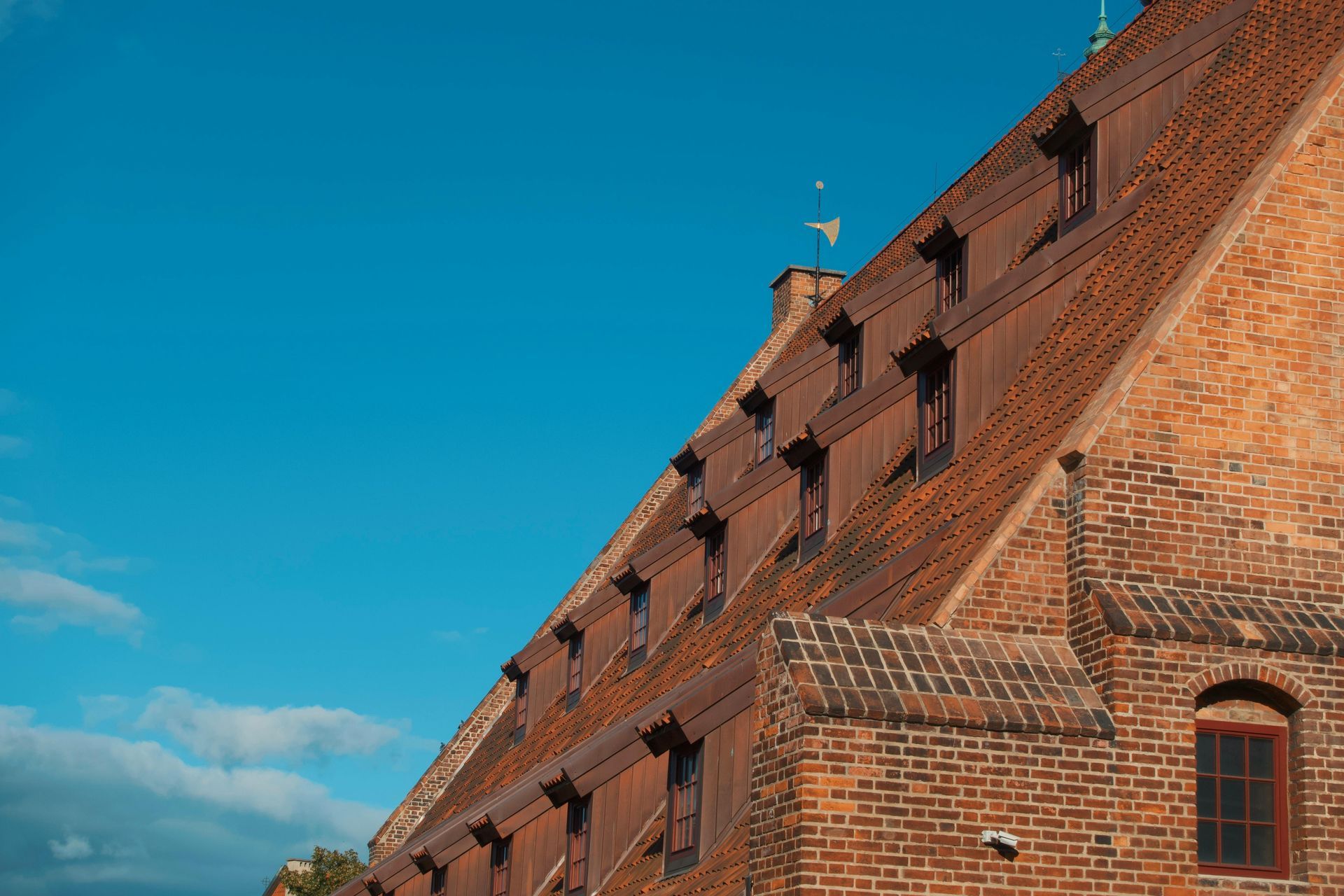
Understanding Roof Pitch and Why It Matters When it comes to your roof, roof pitch — the slope or steepness — plays a big role in your home’s safety, durability, and appearance. What Is Roof Pitch? Roof pitch is the angle of your roof, expressed as a ratio of rise over run. For example, a 4:12 pitch means the roof rises 4 inches for every 12 inches of horizontal distance. Low-pitch roofs: 2:12–4:12, gentle slope Medium-pitch roofs: 4:12–9:12, common on most homes High-pitch roofs: 9:12+, steep and dramatic Why Roof Pitch Matters 1. Water Drainage Steeper roofs shed rain and snow more efficiently, while low-pitch roofs need durable, water-resistant materials to prevent leaks. 2. Roofing Material Options Some materials work better with certain pitches: Asphalt shingles: medium to steep roofs Metal roofing: versatile but needs proper installation on low slopes Flat or very low-pitch roofs: require materials like TPO or EPDM 3. Home Appearance Pitch affects curb appeal: steep roofs give a dramatic look, while low-pitch roofs create a modern, sleek style. 4. Maintenance & Safety Steep roofs are harder to maintain safely, while low-pitch roofs need regular checks to avoid water pooling and damage. How to Find Your Roof Pitch You can measure your roof with a level and tape measure, but the safest method is to have a professional roofing contractor assess it. They can recommend the best materials and maintenance approach for your home. Bottom Line Understanding your roof pitch helps you make smarter decisions about repairs, replacement, and maintenance. It’s a key factor in protecting your home and keeping it looking great for years to come.

What Sets Professional Roofers Apart from Handymen When a roofing issue pops up, it can be tempting to call the neighborhood handyman — especially if it seems like a small fix. But when it comes to protecting your home, not all repairs are created equal. Your roof is one of the most important (and expensive) parts of your house, and who works on it matters. Here’s what truly sets professional roofers apart from handymen. 1. Licensing and Certification Professional roofing contractors are licensed, insured, and certified to perform roofing work that meets state and manufacturer standards. Handymen, on the other hand, typically aren’t licensed for roofing. That means any work they do may not meet code requirements — and it could void your roof’s warranty. 🏠 In Florida: Only licensed roofing contractors can legally perform roof repairs or installations. 2. Roofing-Specific Training Professional roofers spend years mastering roofing systems, materials, and installation techniques. They know how to properly seal flashing, manage ventilation, and handle structural details that a general handyman might overlook. A handyman might be handy with tools — but roofing takes specialized skill and experience to ensure long-term protection from leaks and storm damage. 3. Access to Quality Materials Certified roofers have direct access to manufacturer-grade materials that aren’t sold to the general public. They know which materials hold up best in Florida’s climate and are trained to install them to exact manufacturer specs — which keeps warranties valid . Handymen often use off-the-shelf products that may not last as long or perform as well. 4. Warranties and Guarantees When you hire a licensed roofer, you get more than just a repair — you get peace of mind. Professional roofers back their work with labor and material warranties, ensuring you’re covered if issues arise later. Handyman work typically comes with no warranty or accountability once the job is done. 5. Safety and Liability Roofing is dangerous work. Professional roofers are trained in jobsite safety and carry insurance that protects both their crew and your property. If an unlicensed handyman gets hurt while working on your roof, you could be held liable. Hiring a professional eliminates that risk. 6. Long-Term Value While hiring a handyman might seem cheaper upfront, poor-quality roof work can lead to leaks, water damage, and expensive repairs later on. A professional roofer ensures the job’s done right — saving you time, stress, and money in the long run. The Bottom Line Your roof is too important to gamble on. A professional roofing contractor brings experience, accountability, and craftsmanship that no handyman can match. At Ron Russell Roofing, our licensed team uses top-quality materials, precise installation methods, and industry-leading warranties to protect your home from Florida’s toughest weather. 📞 Get your free quote today: 👉 www.RonRussellRoofing.com
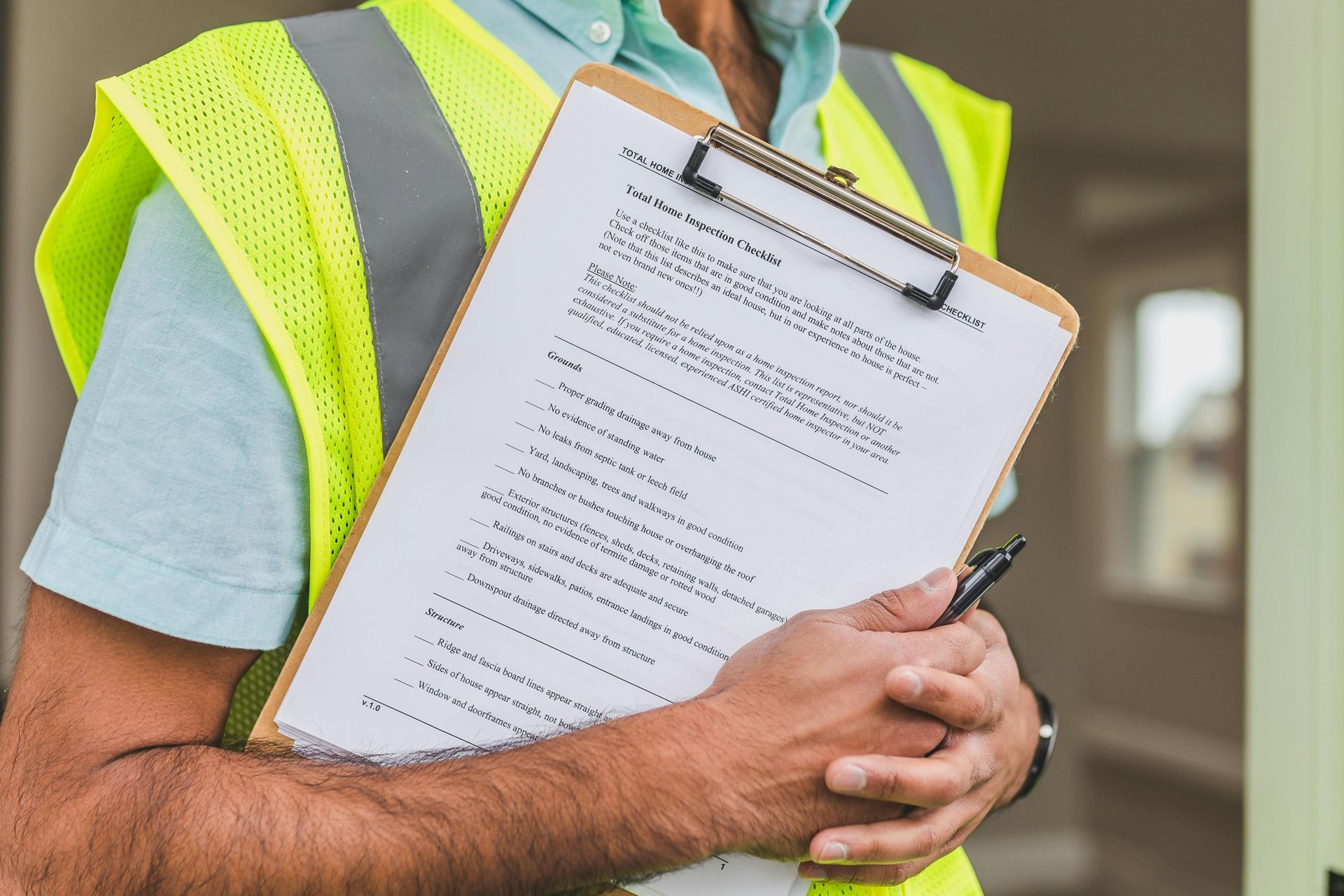
5 Roofing Red Flags Home Inspectors Look For Whether you’re buying, selling, or just keeping up with maintenance, your roof is one of the most important parts of any home inspection. It’s also one of the first things inspectors look at — because roofing issues can signal expensive repairs or hidden damage below the surface. Here are five roofing red flags home inspectors pay close attention to (and that every homeowner should, too): 1. Missing or Damaged Shingles Loose, cracked, or missing shingles are one of the most obvious signs of roof wear. Inspectors flag these right away because they allow water to enter the roof system, leading to leaks and wood rot. 💡 Pro Tip: After any storm, check your roof for missing shingles or debris — especially around edges and valleys. 2. Sagging Rooflines If the roofline looks uneven or dips in certain areas, it can indicate structural issues beneath the surface. Sagging often means there’s long-term moisture damage or weakened roof decking — both of which can get expensive if ignored. 3. Damaged or Improper Flashing Flashing is the thin metal installed around chimneys, vents, and valleys to keep water out. When it’s loose, corroded, or improperly sealed, water can slip in and cause hidden damage. 🧰 Quick Fix: A simple flashing repair can prevent thousands in water damage later. 4. Poor Ventilation A home inspector will always check attic ventilation. Without proper airflow, heat and moisture build up under the roof, causing shingles to age prematurely and increasing the risk of mold. 🌡 Sign to Watch For: A hot, stuffy attic — or shingles that curl or blister. 5. Water Stains or Interior Leaks Water stains on ceilings or in the attic are a sure sign that water is getting past the roof system. Even if the leak looks minor, inspectors will flag it because it often points to a bigger issue with flashing, shingles, or underlayment. The Bottom Line A clean roof inspection can make or break a home sale — or save you from surprise repairs later. Catching these red flags early helps protect your home’s value and keeps your roof performing its best. At Ron Russell Roofing, we know what home inspectors look for — and we fix issues before they become deal-breakers. From small repairs to full replacements, our experienced team ensures your roof passes inspection with confidence. 📞 Get your free quote today: 👉 www.RonRussellRoofing.com

What Happens If You Ignore a Roof Leak? It starts with a tiny drip. Maybe a faint water spot on the ceiling. You tell yourself you’ll get it checked later — but before you know it, “later” turns into costly damage. Ignoring a roof leak, even a small one, is one of the most expensive mistakes homeowners can make. Here’s what can happen if you let it go too long: 1. Hidden Water Damage Spreads When water sneaks past your roof, it doesn’t stay put. It seeps into insulation, wood framing, and drywall — quietly causing damage you can’t see from the outside. Over time, this weakens your home’s structure and leads to costly repairs. 💧 Tip: If you see ceiling stains, peeling paint, or a musty smell, water is already moving where it shouldn’t. 2. Mold and Mildew Growth Moisture from a roof leak creates the perfect breeding ground for mold and mildew. These can grow behind walls and ceilings, spreading quickly and creating potential health concerns for your family — especially in Florida’s humid climate. 3. Insulation Damage When insulation gets wet, it clumps and loses its effectiveness. That means your home won’t stay as cool in summer or as warm in winter — and your energy bills will rise. 🌡 Bonus: Replacing damaged insulation after fixing a leak can actually save you money long-term by restoring energy efficiency. 4. Roof Structure Weakens Wood rafters, decking, and underlayment can rot if exposed to ongoing moisture. Left unchecked, this can compromise the roof’s integrity, requiring major repairs — or even a full replacement — sooner than expected. 5. Interior Damage Gets Worse A small drip might only cause a few ceiling stains at first, but over time, you could see bubbling drywall, damaged flooring, or even electrical hazards if water reaches wiring or fixtures. 6. Repairs Get More Expensive The longer you wait to address a roof leak, the bigger the repair bill becomes. What could’ve been a simple patch may turn into replacing entire roof sections — or repairing structural damage inside the home. The Bottom Line: Don’t Wait Even a “minor” roof leak is never minor for long. Acting quickly protects your home, prevents health issues, and saves you money in the long run. At Ron Russell Roofing, we specialize in finding the source of roof leaks — not just the symptoms — and providing lasting, high-quality repairs that stand up to Florida’s tough weather. 📞 Get your free quote today: 👉 www.RonRussellRoofing.com
